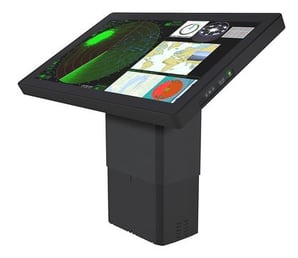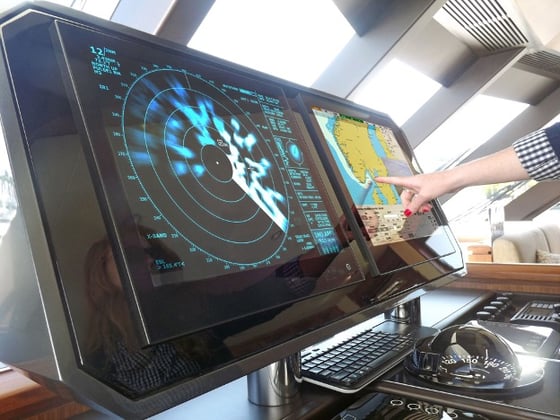
What is a smart ship?
Data means a new dawn for the shipping industry. Here’s why.
Life at sea has been a tale of constant innovation. Maritime inventions routinely altered the course of the world – like when the sun compass enabled The Vikings to cross the North Atlantic, or when the steam engine liberated sailors from their total dependence on the wind.
Fast forward to this day and age, where digitalisation seems to be the defining development. Already it’s having a profound impact on the age-old maritime industry, but we’re just getting started. To fully grasp what's on the horizon for the smart ship industry, it can be a good idea to start with the basics.
What do we mean by smart?
A closer look at the term smart
You can consider things or systems smart when they:
- Connect to the internet or other devices.
- React to events.
- Send and/or receive data and commands.
A smart oven not only cooks, it calculates. It keeps an eye on the food thermometer and, via your smartphone, alerts you when it’s time to start setting the table. Plus, the inbuilt camera lets you check on the progress from a distance.
Essential for curbing shipping emissions
If the benefits of the smart kitchen seem a bit trivial, developing the smart shipping industry is without doubt a worthwhile effort. Indeed, IMO’s CO2 emissions reduction targets depend on it.
Like the smart oven, a smart ship has interconnected systems that can be programmed to run intelligently, and to communicate events of interest. Smart systems on a vessel will do what they’re programmed to do, with a computational swiftness far beyond the ability of human beings.
Unlike us mortals, computers can account for a wide range of factors, including weather, ocean currents, ballast, wave height and engine data. Each of these affect fuel consumption, so optimising for them – collectively – can yield significant reductions. Sure, a seasoned crew can make a difference, for instance by reducing the cruising speed. But there’s only so much you can do manually.
Adding to the complexity, more and more ships combine diesel or LNG engines with battery systems. With hybrid engines, optimal efficiency relies on clever power/energy management (PMS/EMS). For that, there’s no way around automation.
Read more: This electronic chart table brings the bridge into the digital era
Smarter is safer
Aside from fuel economy, there are plenty of other reasons to smarten up the shipping industry. Safety is a big one.
Smart systems enable more secure operations in many ways. For instance, the navigation system (ECDIS) can be instructed to keep the ship out of shallow waters, even accounting for the tidal cycle. And the CCTV system can recognise and alert you of fires, intruders or other unwanted events.
The list goes on. Considering the potential of computing (we’ve only just scratched the surface), it seems inevitable that the shipping industry will become increasingly autonomous.
Smartness hinges on the infrastructure
 |
| Electronic chart table: The HD55 Series X is a popular addition to the ship's bridge. |
Practically every subsystem of a ship can be made smart, opening endless possibilities. Both retrofits and newbuilds can take part.
There’s one prerequisite, though. Just as too heavy a load strains the spine, or rush hour clogs up the underfunded city, you’re only as good as your infrastructure.
Thus, transitioning to a smart ship starts with your hardware. You can expect an exponential increase in data volumes and processing requirements. It follows that ships need continuity and reliability in their data infrastructure and hardware components.
If you want to learn what it takes to actually smarten up a ship, our introduction to computer networks on board is a great place to start.
Good luck on your digitalization journey!

